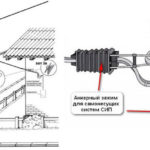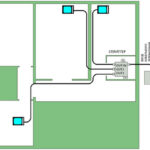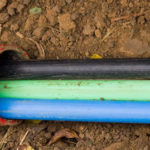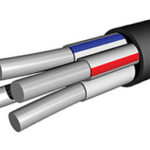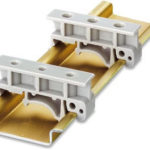The cable is fastened to the wall in different ways: with clamps, brackets, etc. The choice of the appropriate option is made taking into account the purpose of the room, operating conditions. Take into account the type of material from which the wall is built. Different fasteners are designed to fix a cable that differs in characteristics (with insulation, without a box, stranded, etc.).
Content
Methods of fastening to walls made of various materials
It is a mistake to believe that the wiring can be fixed on any flat surface. Bearing structures and partitions are built from materials that differ in properties:
- thin, soft;
- dense;
- solid.
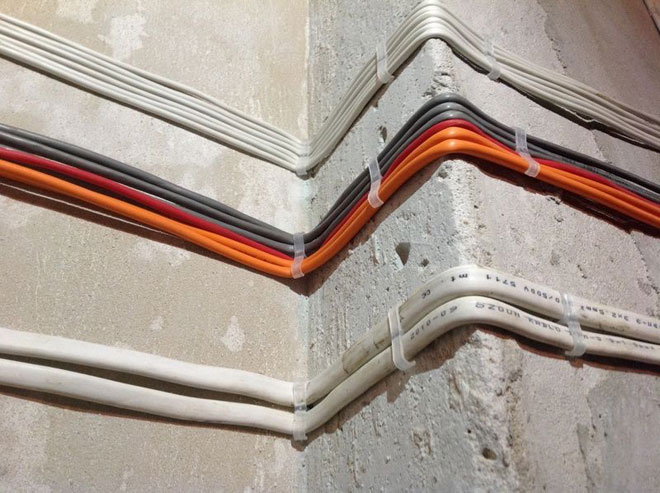
Wall surfaces made of porous materials (foam, aerated concrete) are considered soft.This group also includes drywall, plastic, fiberboard. These materials are able to withstand a moderate load, deform under the influence of strong pressure. To prevent the destruction of the entire structure, you should choose methods for attaching the cable to the wall, based on the use of fasteners that have an extended middle / end part. These can be dowels of different types.
The group of dense materials includes chipboard, wood, gypsum. Surfaces covered with plaster are also durable. The top layer of the material has a dense structure. If the question is how to fix the cable on such a wall, consider 2 options: nails, self-tapping screws.
The first one is less reliable. Such fasteners can be dispensed with if it is used as a temporary measure or if the area will not be used in the future. Due to mobility, the strength of fixing the nail in the wall decreases. To fix the screws, pre-make holes of a smaller diameter. However, this measure is used only if fasteners are difficult to install.
Hard materials: concrete, brick. Dowels are attached to such walls, and then screw holders (brackets, clamps, ties, etc.). When you need to install the cable on a brick, concrete wall, the diameter of the hole must match the size of the dowel. In other cases, the difference should be 1 mm.
Corrugated cable, pipe or cable channel
If open wiring is performed, this method is preferred. This is due to the fact that the wires are hidden in a corrugation or pipe, a special channel made in the form of a box.Thanks to the use of a closed design, the safety of cable operation is increased. However, this method is much less commonly used for laying large bundles of wire.
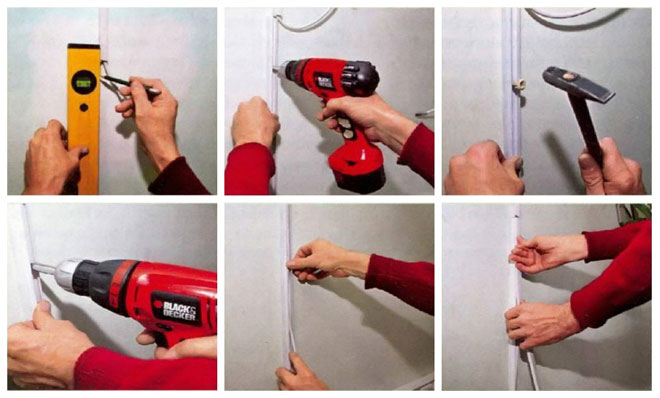
Cable channels
Existing varieties are made from:
- galvanized steel;
- plastic;
- aluminum.
The cable channel can be made in the form of a rectangular box, the outer surface of some products has a radius. Such varieties are often installed along the wall: on the floor or instead of a baseboard. Other types of cable channel:
- trunk;
- parapet.
The first of the options is designed for laying wire over significant distances. These boxes are larger. Parapet analogues are installed in offices in order to protect against damage. They have a flattened shape, due to which such boxes are less likely to touch when moving. To install the cable channel, dowels and screws are used, as well as liquid nails.
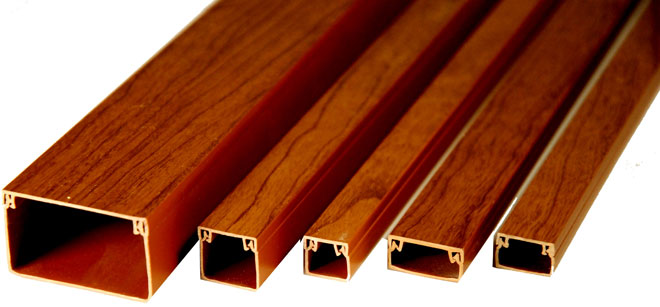
Fastening with clips
This method is often used in open wiring. It is designed for fast cable attachment. The wires are fixed with clips with a small step. Such fasteners are installed more often on the wall than on the ceiling, since some varieties are characterized by an open design. The wires won't stay in them. Fasteners of this type have the form of arches, a closed or open circuit, installed using nails, self-tapping screws.
Clips are selected according to the type of material: metal, plastic. There are holes on the arms, thanks to which the fasteners are fixed on the wall. In this case, dowel clips or a variant with a hole for a nail are used. Such elements are most suitable for mounting bundles of wires.
There is another option for fixing this product with an adhesive single-sided tape. Fastening the wire to the wall in this case does not require drilling the surface. The type of clips is selected taking into account the type of base material.
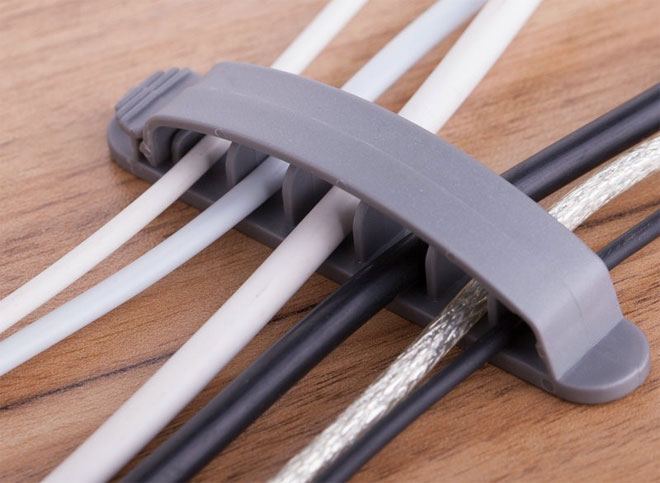
exposed wires
Cable fastening is carried out with a certain step. The wiring remains open. For comparison, if the cable is laid in a strobe, you can completely hide it. However, open wire is much easier to maintain. In this case, detachable and one-piece fasteners are used. If you plan to increase the number of cores, use the first of the types.
Metal bracket
Such cable fasteners can have 1 or 2 lugs. It is fixed on the wall with nails, self-tapping screws. This type of product is used when laying the cable in a metal sleeve. Supports heavy wires. The bracket is selected taking into account the diameter of the metal sleeve.

Dowel-screed
If you are interested in the question of how to fix the cable using such products, you should know that a dowel is first inserted into the wall. It is equipped with a special lock on a flexible plastic band. For fastening, detachable and one-piece fasteners can be used. The disadvantage of this method is the lack of a rigid fixation of the structure, since the dowel is simply connected to a flexible tape.
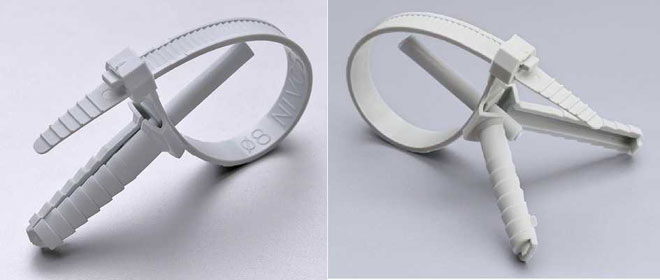
Ties with a platform
This option is outwardly similar to the previously considered analogue. However, in this case, the dowel has a platform, due to which such an element is firmly fixed in the wall. If a flexible cable tie with a hole for a self-tapping screw is used for fastening, it is not necessary to use a separate dowel. This method involves the need to install self-tapping screws with a certain step.
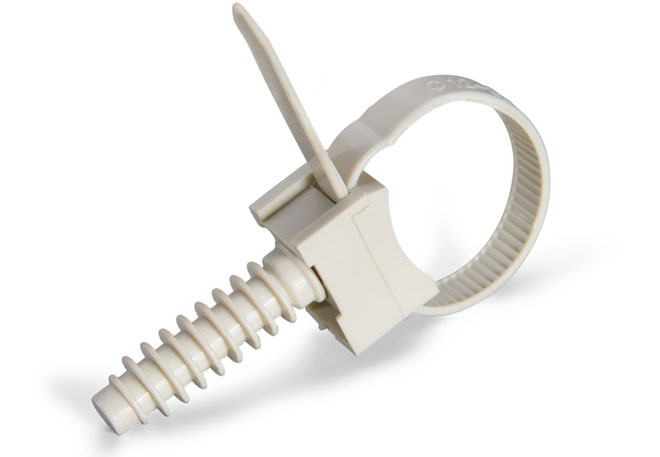
Dowel clamp
Outwardly, it simultaneously resembles a dowel and a collar. For fixing in the wall, notches are provided located at the ends of the fastener. First, the cable is tied, and you can attach the wire to the wall by laying a kind of dowel in a pre-made hole. The product is held thanks to the notches - they do not allow the clamp to slip out.
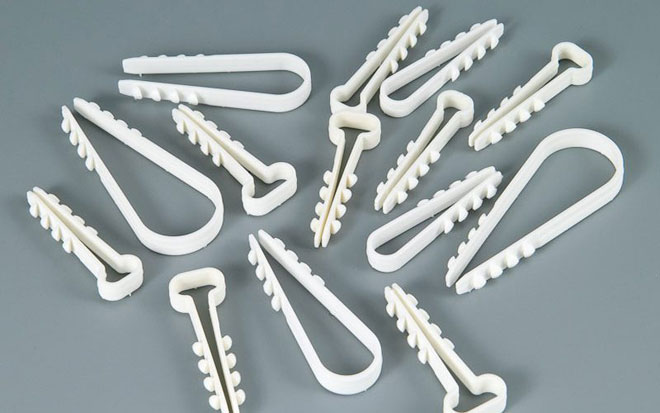
Dowel type bases
Outwardly, they resemble a dowel and a self-tapping screw, they have a hole for installing a plastic tie. Flexible elements are purchased separately. First, a hole is made in the wall. Then a fastener is installed, and the head with the hole should be located on the wall surface. At the last stage, using a removable tie, the cable is fastened.
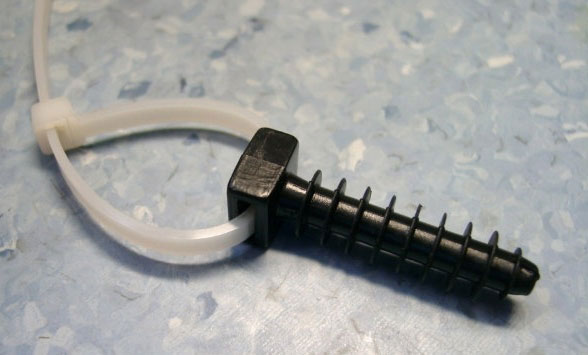
insulators
This mounting option is used when laying a cable in a wooden house. It is also sometimes used as decoration. First, an insulator is installed on the wall surface (a ceramic barrel with a hole for a nail or screw in the center). Then a twisted wire is pulled between such elements.
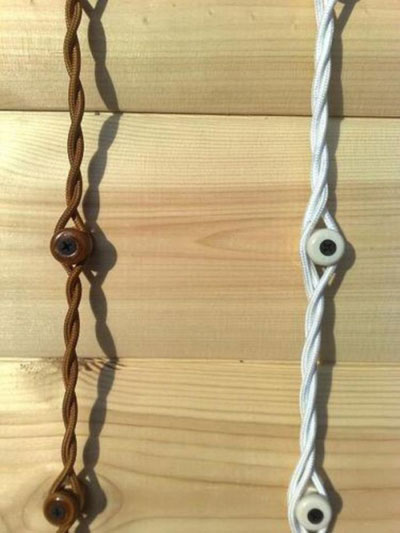
Homemade fasteners
If the cable is laid in hidden areas, you can use self-made elements: they are created using self-tapping screws and dowels, and old wiring or metal flexible plates are used as a platform for fixing the wires. After installing the fasteners, strapping is performed. In this case, the free ends of the flexible platform or the old wire are connected to each other after laying the cable in the loop.
Building mix
Asbestos is used, but a mixture of gypsum and plaster can also be used.This option is often suitable for fastening the cable in the strobe. The mixture fixes the wire with a certain step. This method can be used as a primary or secondary measure.


